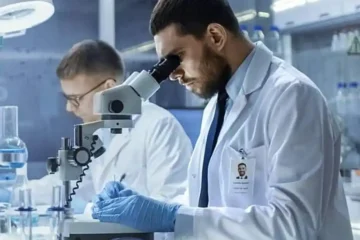Advanced Integrated Medical Therapies for Regeneration, Longevity, and Wellness

(Regenerative Medicine: PRP, Peptides, Hormonal and Neurological Support)
Platelet-Rich Plasma (PRP) Therapy: Nature’s Regenerative Matrix
Platelet-Rich Plasma (PRP) therapy is one of the most established regenerative techniques used in advanced integrative medical programs. PRP involves concentrating the patient’s own platelets—rich in growth factors—from a small blood sample and injecting them into targeted areas to stimulate tissue repair and regeneration.
Applications of PRP include:
- Musculoskeletal conditions – PRP is widely used for tendonitis, osteoarthritis, and joint pain, especially in the knees, shoulders, and spine.
- Aesthetic rejuvenation – Facial PRP (“vampire facials”) promotes collagen production, skin tightening, and scar reduction.
- Hair regeneration – Scalp injections of PRP are used to slow or reverse hair thinning and alopecia.
- Pelvic and sexual health – PRP is also being applied in gynecologic and urologic therapies for improved tissue healing and sensitivity.
Because PRP is autologous (from the patient’s own body), there is virtually no risk of allergic reaction or rejection. Its efficacy lies in its ability to trigger localized healing cascades and improve blood flow, often complementing structural rehabilitation and physical therapy.
Peptide Therapy: Bioregulators for Cellular Signaling
Peptide therapy represents a new frontier in longevity and functional medicine. Peptides are short chains of amino acids that act as signaling molecules in the body—communicating with receptors to regulate inflammation, immune function, growth, repair, and metabolism.
Key peptides used in integrative protocols may include:
- BPC-157 – Promotes rapid healing of the gut, muscles, and ligaments. Known for its anti-inflammatory and angiogenic (blood-vessel forming) properties.
- Thymosin Alpha-1 – Modulates immune responses and enhances pathogen resistance, particularly useful for viral and autoimmune conditions.
- GHK-Cu – A copper peptide that promotes skin regeneration, wound healing, and anti-aging effects.
- CJC-1295 and Ipamorelin – Used to stimulate natural growth hormone release, aiding in fat metabolism, muscle recovery, and sleep quality.
- Semax and Selank – Neuroactive peptides that reduce anxiety, support cognition, and may aid in recovery from neurological injury or stroke.
Peptides are typically administered via subcutaneous injection or nasal spray and are prescribed based on laboratory and clinical assessment. While still under regulatory scrutiny in many countries, their use in progressive integrative clinics has shown promising results.
Bioidentical Hormone Replacement Therapy (BHRT): Precision Endocrinology
Aging and chronic stress often lead to disruptions in endocrine function. This includes declining levels of estrogen, progesterone, testosterone, DHEA, cortisol, and thyroid hormones. Rather than using synthetic hormones, this medical model often utilizes bioidentical hormones—compounds molecularly identical to those produced in the human body.
Goals of BHRT include:
- Restoring energy, libido, and cognitive clarity
- Supporting bone density and cardiovascular health
- Improving metabolic function and insulin sensitivity
- Enhancing mood and sleep
Prior to treatment, hormone panels are conducted alongside adrenal and thyroid testing to ensure safe, personalized dosing. BHRT may be administered through creams, pellets, patches, or sublingual tablets. The therapy is closely monitored to ensure hormonal balance, rather than excess.
Neurological and Cognitive Support
Another core aspect of the integrative approach is focused on neuroplasticity and brain optimization. Given the prevalence of post-COVID brain fog, chronic fatigue, and cognitive decline in aging populations, the clinic employs a layered strategy to restore neurological health.
Therapeutic components include:
- NAD+ IV drips – Support mitochondrial function and repair DNA damage in brain cells.
- Neurofeedback – Brainwave training using EEG biofeedback to support focus, memory, and emotional regulation.
- Transcranial photobiomodulation (tPBM) – Low-level infrared light applied to the scalp to increase blood flow and stimulate brain metabolism.
- Magnesium L-threonate, acetyl-L-carnitine, and nootropic stacks – For neuroprotection and synaptic plasticity.
In some protocols, practitioners also integrate mindfulness-based practices, breathing techniques, and HRV (heart rate variability) training to regulate the autonomic nervous system and reduce chronic stress.
Case Coordination and Multimodal Care
These therapies are rarely used in isolation. Instead, patients are guided through a customized protocol that combines several treatments in a synergistic way, sequenced to maximize benefit. For instance:
- A patient with joint inflammation and chronic fatigue may receive ozone (EBOO), PRP joint injections, NAD+ infusions, and peptide therapy in a 10-day sequence.
- A post-COVID patient with lingering neurological symptoms may follow a program of HBOT, neuro-nutrient IVs, tPBM, and gut microbiome restoration.
- A healthy client seeking age optimization may begin with diagnostics and receive mitochondrial supplements, intermittent cryotherapy, IV glutathione, and mild hormone balancing.
This multimodal care is physician-supervised and adapted daily based on feedback and observed response.


